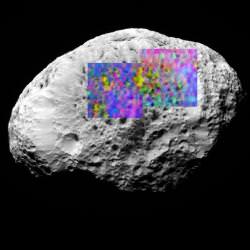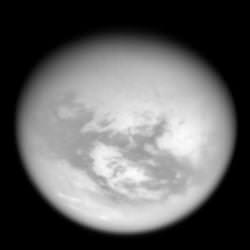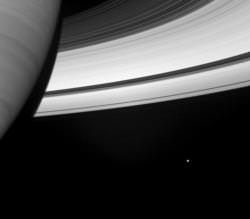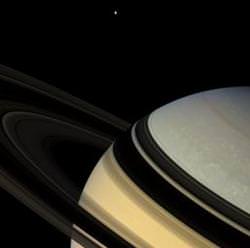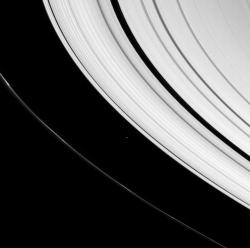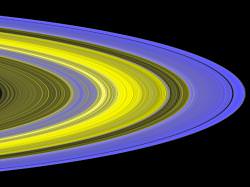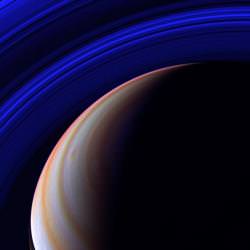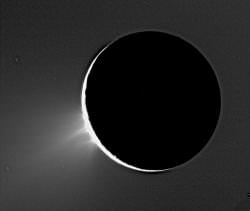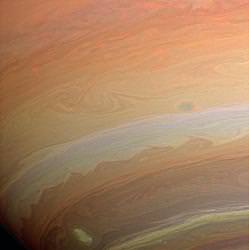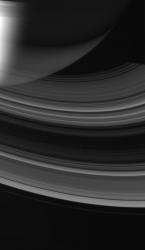One of the most bizarre objects in the Solar System has got to be Saturn’s moon Hyperion. From the pictures taken by Cassini, this tiny moon looks like a sponge you might buy at the Body Shop. In a new research paper appearing in the July 5 issue of the journal Nature, scientists have mapped the surface of Hyperion, and found hydrocarbons, some of the building blocks of life. And they also think they know why it has such a bizarre look.
The information was gathered by Cassini’s ultraviolet imaging spectrograph and visual and infrared mapping spectrometer. These two instruments are able to map mineral and chemical constituents of a surface. In this case, the surface of Hyperion. It found that most of the surface is a mix of frozen water and organic dust, as well as trace amounts of frozen carbon dioxide.
But the key discovery are these hydrocarbons; combinations of carbon and hydrogen atoms. When these molecules are embedded in ice and then exposed to ultraviolet radiation, new complex molecules can form that are present in life.
In addition to the surface analysis, Cassini also helped scientists work out why the moon has such a bizarre spongy appearance. It all comes down to an extremely low density. According to new calculations, the moon has only half the density of water. Its low gravity means that normal processes, such as crater formation work differently than on more dense objects in the Solar System. Objects that impact Hyperion plunge in, compressing the surface instead of blasting out the familiar looking craters.
Original Source: NASA

